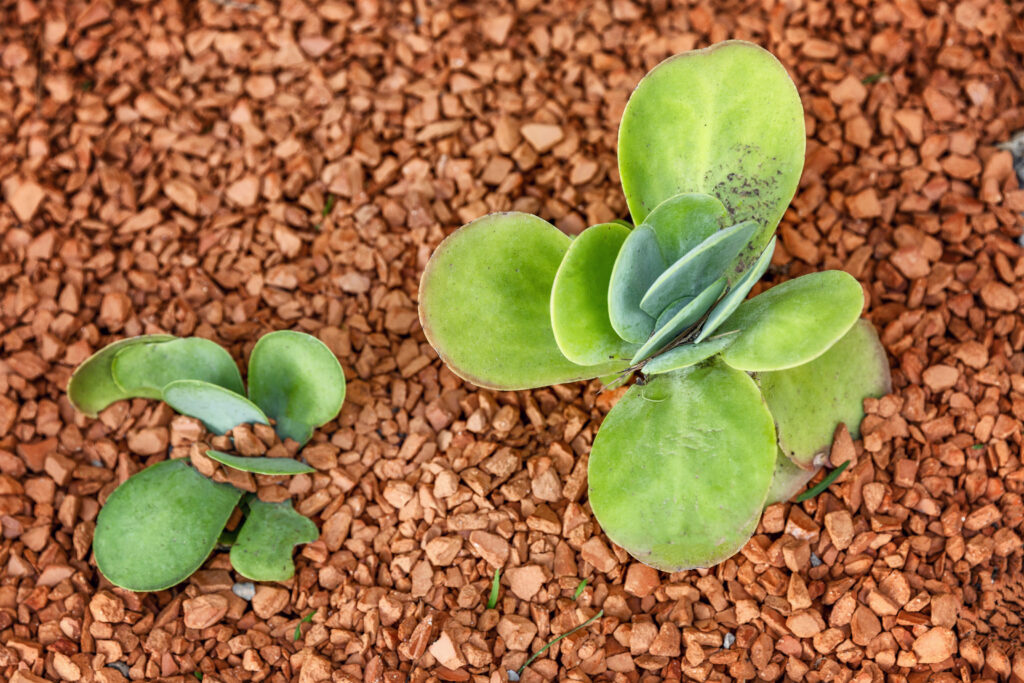Propagating succulents is a rewarding way to expand your collection and share the joy of these fascinating plants with others. This comprehensive guide will walk you through everything you need to know about successfully propagating succulents using different methods.
Understanding Succulent Propagation
Basic Methods
Three primary ways to propagate succulents:
- Leaf propagation
- Stem cuttings
- Offsets (pups)
- Seeds (advanced method)
Best Time to Propagate
Optimal conditions for success:
- Spring and summer months
- Active growing season
- Warm temperatures
- Bright, indirect light
Essential Supplies

Basic Tools
Gather these supplies:
- Sharp, clean scissors or knife
- Well-draining succulent soil
- Shallow propagation trays
- Spray bottle
- Paper towels
- Small pots
- Rooting hormone (optional)
Soil Mix Recipe
Create the perfect propagation medium:
- 50% regular potting soil
- 25% coarse sand
- 25% perlite or pumice
- Optional: Top layer of fine gravel
Leaf Propagation Method
Selecting Leaves
Choose leaves that are:
- Healthy and plump
- Free from damage
- From the middle of the plant
- Fully mature
Step-by-Step Process
- Gently twist leaf from stem
- Allow callus to form (3-7 days)
- Place on well-draining soil
- Mist lightly every few days
- Wait for roots to develop
- Plant when new rosette forms
Stem Cutting Technique
Preparing Cuttings
How to take proper cuttings:
- Cut 4-6 inches below growth tip
- Remove lower leaves
- Make clean, angled cuts
- Allow to dry for callusing
Planting Process
- Prepare pots with soil mix
- Insert cutting 1-2 inches deep
- Support if needed
- Place in bright, indirect light
- Begin watering after 1 week
Propagating from Offsets
Identifying Offsets
Look for:
- Baby plants around base
- Independent root systems
- Mature enough size
- Healthy appearance
Removal and Replanting
- Clear soil around offset
- Cut or gently separate
- Clean attachment point
- Allow to callus
- Plant in fresh soil
Common Problems and Solutions
Issue: Rotting
Prevention:
- Ensure proper callusing
- Avoid overwatering
- Provide good air circulation
- Use sterile tools
Issue: No Root Development
Solutions:
- Check light levels
- Maintain warm temperatures
- Try rooting hormone
- Ensure leaf is intact
Advanced Propagation Tips
Increasing Success Rates
Expert techniques:
- Use bottom heat (70-75°F)
- Maintain consistent humidity
- Provide morning sun exposure
- Rotate trays regularly
Seasonal Adjustments
Modify care based on season:
- Reduce water in winter
- Increase humidity in summer
- Adjust light exposure
- Monitor temperature
Care After Propagation
Early Care
First few weeks:
- Minimal watering
- Bright, indirect light
- Good air circulation
- Protection from extreme temperatures
Transitioning to Regular Care
When to begin normal care:
- After root establishment
- When new growth appears
- Once parent leaf dies
- When plant feels anchored
Creating Displays
Arrangement Ideas
Ways to showcase propagations:
- Glass terrariums
- Shallow clay dishes
- Vintage containers
- Living walls
Growing Together
Considerations for group plantings:
- Similar growth rates
- Compatible water needs
- Adequate spacing
- Aesthetic combinations
Record Keeping
Tracking Progress
Document these details:
- Start date
- Parent plant information
- Method used
- Success rate
- Growth timeline
Learning from Experience
Keep notes on:
- Successful techniques
- Failed attempts
- Seasonal variations
- Environmental factors
Succulent propagation is both an art and a science. Success comes with practice and patience, but the reward of watching new plants develop from a single leaf or cutting is worth the effort. Remember that different species may respond better to certain propagation methods, so don’t be afraid to experiment and find what works best for your particular varieties. With proper technique and care, you’ll soon have plenty of new succulents to expand your collection or share with fellow plant enthusiasts.




